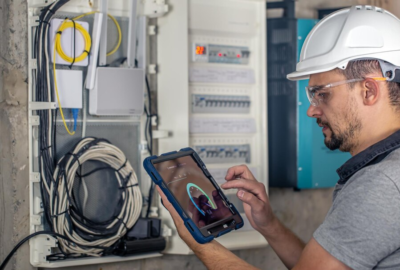Electronic Data Capture (EDC) Process for a LIMS: Enhancing Precision and Efficiency in Laboratories
In the ever-evolving landscape of modern laboratories, the Electronic Data Capture (EDC) process has emerged as a transformative force, revolutionizing data management and analysis. A crucial component of Laboratory Information Management Systems (LIMS), the EDC process integrates advanced technologies to streamline data collection, enhance accuracy, and expedite analysis. This comprehensive and systematic approach has redefined the way laboratories operate, elevating their capabilities and driving scientific innovation.
- Introduction to Electronic Data Capture (EDC): At its core, EDC involves the replacement of traditional paper-based data collection methods with digital processes, resulting in more accurate, efficient, and secure data management. LIMS, as a sophisticated data management platform, integrates EDC capabilities to facilitate the entire data lifecycle – from initial collection to storage, analysis, and reporting.
- Data Collection Automation: The EDC process commences with the automation of data collection. In a laboratory setting, this involves the utilization of electronic devices such as sensors, instruments, and scanners to directly input data into the LIMS database. This eliminates the need for manual transcription, reducing the risk of human error and enhancing data accuracy.
- Seamless Integration of Instruments: LIMS seamlessly interfaces with a diverse range of laboratory instruments, allowing for real-time data transmission and integration. This connectivity eliminates the need for manual data entry, accelerating the data capture process and ensuring that information is promptly available for analysis.
- Structured Data Entry and Validation: EDC systems within LIMS provide structured forms and templates for data entry, ensuring consistent and standardized data collection. These forms often incorporate built-in validation rules that prevent erroneous entries and enforce data integrity. Additionally, data validation checks help maintain the quality and reliability of collected data.
- Real-Time Data Capture: One of the significant advantages of EDC is real-time data capture. As instruments generate data, it is immediately fed into the LIMS, allowing researchers to monitor ongoing experiments and studies in real time. This feature is especially beneficial for time-sensitive processes, enabling timely interventions and adjustments if needed.
- Data Traceability and Audit Trails: EDC processes in LIMS offer robust traceability and audit trail features. Every action taken within the system is logged and timestamped, creating a comprehensive record of data changes, approvals, and user interactions. This feature ensures transparency, accountability, and compliance with regulatory requirements.
- Enhanced Data Security: EDC processes within LIMS implement robust security measures to safeguard sensitive data. Access controls, user authentication, and encryption mechanisms protect data from unauthorized access, mitigating potential breaches and ensuring confidentiality.
- Data Transformation and Analysis: Once collected, the electronically captured data is transformed and analyzed within the LIMS. Advanced data analysis tools and algorithms are employed to identify patterns, correlations, and trends that might otherwise go unnoticed. This analytical capability drives informed decision-making and enables researchers to extract meaningful insights from complex datasets.
- Integration with External Data Sources: EDC processes within LIMS can also integrate data from external sources, such as external databases, spreadsheets, or third-party applications. This integration allows researchers to consolidate data from multiple sources, facilitating a comprehensive analysis and a holistic understanding of research findings.
- Customized Reporting and Visualization: Upon data analysis, EDC-equipped LIMS platforms facilitate the generation of customized reports, graphs, and charts. Researchers can tailor these reports to meet specific requirements, enhancing the communication of research outcomes to stakeholders and collaborators.
- Regulatory Compliance: EDC processes within LIMS play a pivotal role in ensuring regulatory compliance. By capturing, storing, and managing data in accordance with established standards and guidelines, laboratories can demonstrate adherence to regulatory requirements during audits and inspections.
- Collaboration and Knowledge Sharing: EDC processes not only streamline data collection and analysis but also foster collaboration among researchers. With data accessible in a centralized LIMS platform, teams can easily share findings, insights, and progress. This collaborative environment accelerates knowledge dissemination and drives collective innovation.
In conclusion, the Electronic Data Capture (EDC) process within a Laboratory Information Management System (LIMS) represents a paradigm shift in laboratory operations. By automating data collection, enhancing accuracy, and enabling real-time analysis, EDC-equipped LIMS platforms empower laboratories to operate with unparalleled efficiency, precision, and collaboration. As technology continues to evolve, the integration of EDC processes in LIMS will undoubtedly play an instrumental role in shaping the future of scientific research and discovery.









